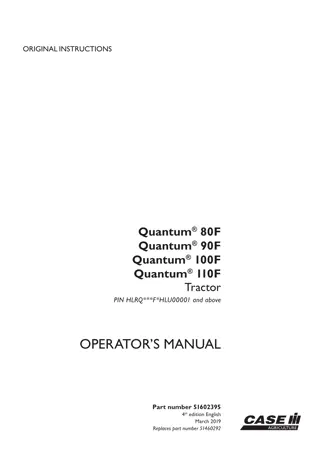Addressing The Quantum Threat: The Quantum Resistant Ledger
The Quantum Resistant Ledger (QRL) is a visionary blockchain and digital asset security solution designed to counter the emerging threat of quantum computing. With quantum technology advancing and traditional blockchains at risk, QRL offers an industrial-grade, quantum computer-resistant cryptocurre
3 views • 9 slides
Quantum Wires and Nanowires: Properties and Applications
Quantum wires, quantum dots, and nanowires are essential components in nanotechnology due to their unique properties and applications. Quantum wires are one-dimensional systems with restricted electron movement, while quantum dots are zero-dimensional, limiting electron movement in all dimensions. N
3 views • 12 slides
Quantum Circuit Simulations and Electromagnetic Analyses in Quantum Photonics
Explore the world of quantum photonics with insights into two-qubit photon counters, jointed cavities, qubit pads, and quantum circuit simulations. Ansys simulations and experimental data by researchers Alessandro D'Elia and Claudio Gatti provide in-depth analysis of quantum phenomena. Discover the
0 views • 7 slides
Quantum Key Agreements and Random Oracles
This academic paper explores the impossibility of achieving key agreements using quantum random oracles, discussing the challenges and limitations in quantum communication, cryptographic protocols, quantum computation, and classical communication. The study delves into the implications of quantum ra
1 views • 29 slides
Impact of PbS Quantum Dots on GaAs for Tailored Photonic Applications
This research delves into the alteration of GaAs emission through the integration of PbS quantum dots, emphasizing the optical properties and absorption edge engineering. The unique characteristics of PbS and GaAs make them ideal candidates for enhancing optical fibers and optoelectronic devices. Th
0 views • 19 slides
Overview of QuMA: A Microarchitecture for a Superconducting Quantum Processor
This paper introduces QuMA, a quantum microarchitecture that bridges the gap between high-level algorithms and the quantum physical layer. It defines a multi-layered system stack for quantum computers, focusing on compiler support, quantum error correction, and the need for a micro-architecture fram
2 views • 21 slides
Case IH Quantum 65C Quantum 75C Quantum 85C Quantum 95C Tractors Operator’s Manual Instant Download (Publication No.47394642)
Case IH Quantum 65C Quantum 75C Quantum 85C Quantum 95C Tractors Operator\u2019s Manual Instant Download (Publication No.47394642)
0 views • 22 slides
Case IH Quantum 65C Quantum 75C Quantum 85C Quantum 95C Tractors Operator’s Manual Instant Download (Publication No.84131288)
Case IH Quantum 65C Quantum 75C Quantum 85C Quantum 95C Tractors Operator\u2019s Manual Instant Download (Publication No.84131288)
0 views • 20 slides
Case IH Quantum 65C Quantum 75C Quantum 85C Quantum 95C Tractors Operator’s Manual Instant Download (Publication No.84267386)
Case IH Quantum 65C Quantum 75C Quantum 85C Quantum 95C Tractors Operator\u2019s Manual Instant Download (Publication No.84267386)
0 views • 22 slides
Case IH Quantum 65C Quantum 75C Quantum 85C Quantum 95C Tractors Operator’s Manual Instant Download (Publication No.84576257)
Case IH Quantum 65C Quantum 75C Quantum 85C Quantum 95C Tractors Operator\u2019s Manual Instant Download (Publication No.84576257)
0 views • 22 slides
Case IH Quantum 65V Quantum 75V Quantum 85V Quantum 95V Quantum 105V Tractor Operator’s Manual Instant Download (Publication No.48077078)
Case IH Quantum 65V Quantum 75V Quantum 85V Quantum 95V Quantum 105V Tractor Operator\u2019s Manual Instant Download (Publication No.48077078)
0 views • 22 slides
Case IH Quantum 65V Quantum 75V Quantum 85V Quantum 95V Quantum 105V Tractors Operator’s Manual Instant Download (Publication No.47374545)
Case IH Quantum 65V Quantum 75V Quantum 85V Quantum 95V Quantum 105V Tractors Operator\u2019s Manual Instant Download (Publication No.47374545)
0 views • 22 slides
Case IH Quantum 65V Quantum 75V Quantum 85V Quantum 95V Quantum 105V Tractors Operator’s Manual Instant Download (Publication No.84515953)
Case IH Quantum 65V Quantum 75V Quantum 85V Quantum 95V Quantum 105V Tractors Operator\u2019s Manual Instant Download (Publication No.84515953)
0 views • 21 slides
Case IH Quantum 65V Quantum 75VN Quantum 85VN Quantum 95VN Tractors Operator’s Manual Instant Download (Publication No.47374455)
Case IH Quantum 65V Quantum 75VN Quantum 85VN Quantum 95VN Tractors Operator\u2019s Manual Instant Download (Publication No.47374455)
0 views • 22 slides
Case IH Quantum 75F Quantum 85F Quantum 95F Quantum 105F Tractor Operator’s Manual Instant Download (Publication No.48077089)
Case IH Quantum 75F Quantum 85F Quantum 95F Quantum 105F Tractor Operator\u2019s Manual Instant Download (Publication No.48077089)
0 views • 22 slides
Case IH Quantum 75F Quantum 85F Quantum 95F Quantum 105F Tractors Operator’s Manual Instant Download (Publication No.84515964)
Case IH Quantum 75F Quantum 85F Quantum 95F Quantum 105F Tractors Operator\u2019s Manual Instant Download (Publication No.84515964)
0 views • 22 slides
Case IH Quantum 75N Quantum 85N Quantum 95N Quantum 105N Tractor Operator’s Manual Instant Download (Publication No.48077102)
Case IH Quantum 75N Quantum 85N Quantum 95N Quantum 105N Tractor Operator\u2019s Manual Instant Download (Publication No.48077102)
0 views • 22 slides
Case IH Quantum 75N Quantum 85N Quantum 95N Quantum 105N Tractors Operator’s Manual Instant Download (Publication No.47374513)
Case IH Quantum 75N Quantum 85N Quantum 95N Quantum 105N Tractors Operator\u2019s Manual Instant Download (Publication No.47374513)
0 views • 22 slides
Case IH Quantum 75N Quantum 85N Quantum 95N Quantum 105N Tractors Operator’s Manual Instant Download (Publication No.84593516)
Case IH Quantum 75N Quantum 85N Quantum 95N Quantum 105N Tractors Operator\u2019s Manual Instant Download (Publication No.84593516)
0 views • 22 slides
Case IH Quantum 80CL Quantum 90CL Quantum 100CL Quantum 110CL Tractor (Pin.HLRQCHLU00001 and above) Operator’s Manual Instant Download (Publication No.48162724)
Case IH Quantum 80CL Quantum 90CL Quantum 100CL Quantum 110CL Tractor (Pin.HLRQCHLU00001 and above) Operator\u2019s Manual Instant Download (Publication No.48162724)
1 views • 22 slides
Case IH Quantum 80CL Quantum 90CL Quantum 100CL Quantum 110CL Tractor (Pin.HLRQCHLU00001 and above) Operator’s Manual Instant Download (Publication No.51602398)
Case IH Quantum 80CL Quantum 90CL Quantum 100CL Quantum 110CL Tractor (Pin.HLRQCHLU00001 and above) Operator\u2019s Manual Instant Download (Publication No.51602398)
0 views • 22 slides
Case IH Quantum 80CL Quantum 90CL Quantum 100CL Quantum 110CL Tractor Operator’s Manual Instant Download (Publication No.47981718)
Case IH Quantum 80CL Quantum 90CL Quantum 100CL Quantum 110CL Tractor Operator\u2019s Manual Instant Download (Publication No.47981718)
0 views • 22 slides
Case IH Quantum 80F Quantum 90F Quantum 100F Quantum 110F Tractor (Pin.HLRQFHLU00001 and above) Operator’s Manual Instant Download (Publication No.51602358)
Case IH Quantum 80F Quantum 90F Quantum 100F Quantum 110F Tractor (Pin.HLRQFHLU00001 and above) Operator\u2019s Manual Instant Download (Publication No.51602358)
1 views • 22 slides
Case IH Quantum 80F Quantum 90F Quantum 100F Quantum 110F Tractor (Pin.HLRQFHLU00001 and above) Operator’s Manual Instant Download (Publication No.51602388)
Case IH Quantum 80F Quantum 90F Quantum 100F Quantum 110F Tractor (Pin.HLRQFHLU00001 and above) Operator\u2019s Manual Instant Download (Publication No.51602388)
0 views • 22 slides
Case IH Quantum 80F Quantum 90F Quantum 100F Quantum 110F Tractor (Pin.HLRQFHLU00001 and above) Operator’s Manual Instant Download (Publication No.51602395)
Case IH Quantum 80F Quantum 90F Quantum 100F Quantum 110F Tractor (Pin.HLRQFHLU00001 and above) Operator\u2019s Manual Instant Download (Publication No.51602395)
0 views • 22 slides
Case IH QUANTUM 80F QUANTUM 90F QUANTUM 100F QUANTUM 110F Tractor Operator’s Manual Instant Download (Publication No.47847699)
Case IH QUANTUM 80F QUANTUM 90F QUANTUM 100F QUANTUM 110F Tractor Operator\u2019s Manual Instant Download (Publication No.47847699)
0 views • 22 slides
Case IH QUANTUM 80F QUANTUM 90F QUANTUM 100F QUANTUM 110F Tractor Operator’s Manual Instant Download (Publication No.47847709)
Case IH QUANTUM 80F QUANTUM 90F QUANTUM 100F QUANTUM 110F Tractor Operator\u2019s Manual Instant Download (Publication No.47847709)
0 views • 22 slides
Case IH Quantum 80F Quantum 90F Quantum 100F Quantum 110F Tractor Operator’s Manual Instant Download (Publication No.48132361)
Case IH Quantum 80F Quantum 90F Quantum 100F Quantum 110F Tractor Operator\u2019s Manual Instant Download (Publication No.48132361)
0 views • 22 slides
Case IH Quantum 80F Quantum 90F Quantum 100F Quantum 110F Tractor Operator’s Manual Instant Download (Publication No.48132399)
Case IH Quantum 80F Quantum 90F Quantum 100F Quantum 110F Tractor Operator\u2019s Manual Instant Download (Publication No.48132399)
0 views • 22 slides
Case IH Quantum 80F Quantum 90F Quantum 100F Quantum 110F Tractor Operator’s Manual Instant Download (Publication No.48154189)
Case IH Quantum 80F Quantum 90F Quantum 100F Quantum 110F Tractor Operator\u2019s Manual Instant Download (Publication No.48154189)
0 views • 22 slides
Case IH Quantum 80N Quantum 90N Quantum 100N Quantum 110N Tractor (Pin.HLRQNHLU00001 and above) Operator’s Manual Instant Download (Publication No.51602319)
Case IH Quantum 80N Quantum 90N Quantum 100N Quantum 110N Tractor (Pin.HLRQNHLU00001 and above) Operator\u2019s Manual Instant Download (Publication No.51602319)
1 views • 22 slides
Case IH Quantum 80N Quantum 90N Quantum 100N Quantum 110N Tractor (Pin.HLRQNHLU00001 and above) Operator’s Manual Instant Download (Publication No.51602343)
Case IH Quantum 80N Quantum 90N Quantum 100N Quantum 110N Tractor (Pin.HLRQNHLU00001 and above) Operator\u2019s Manual Instant Download (Publication No.51602343)
0 views • 21 slides
Case IH Quantum 80N Quantum 90N Quantum 100N Quantum 110N Tractor (Pin.HLRQNHLU00001 and above) Operator’s Manual Instant Download (Publication No.51602349)
Case IH Quantum 80N Quantum 90N Quantum 100N Quantum 110N Tractor (Pin.HLRQNHLU00001 and above) Operator\u2019s Manual Instant Download (Publication No.51602349)
0 views • 22 slides
Case IH QUANTUM 80N QUANTUM 90N QUANTUM 100N QUANTUM 110N Tractor Operator’s Manual Instant Download (Publication No.47847660)
Case IH QUANTUM 80N QUANTUM 90N QUANTUM 100N QUANTUM 110N Tractor Operator\u2019s Manual Instant Download (Publication No.47847660)
0 views • 22 slides
Case IH QUANTUM 80N QUANTUM 90N QUANTUM 100N QUANTUM 110N Tractor Operator’s Manual Instant Download (Publication No.47847674)
Case IH QUANTUM 80N QUANTUM 90N QUANTUM 100N QUANTUM 110N Tractor Operator\u2019s Manual Instant Download (Publication No.47847674)
0 views • 22 slides
Indistinguishable Photons from Semiconductor Quantum Dots
Explore the groundbreaking experiment by Santori et al. demonstrating the production of indistinguishable photons from semiconductor quantum dots using a Hong-Ou-Mandel experiment. Discover the significance of this achievement in quantum computing and quantum information applications. Dive into the
0 views • 21 slides
Benefits and Drawbacks of Positive Behavioural Support Principles for Mental Health Support
Positive Behavioural Support (PBS) principles are practical and effective methods to address challenging behaviors in individuals with poor mental health. These principles focus on understanding the reasons behind challenging behaviors, modifying the environment, teaching new skills, and improving q
1 views • 27 slides
Exploring the Quantum Revolution and Strategic Initiatives in Science
Delve into the next Quantum Revolution and the strategic initiatives shaping the field of Quantum Information Science. Discover the impact of the original Quantum 1.0 Revolution and the advancements paving the way for Quantum 2.0. Explore key documents like the National Quantum Initiative Act and th
0 views • 24 slides
Introduction to PBS Data API Pull Quote
Explore the PBS Data API in this webinar introduction session scheduled for 6th November 2023 at 3:00 PM. Learn about accessing PBS data, API features, user journeys, and project timelines. Join us in modernizing data distribution for improved accessibility and usability. Acknowledge the Traditional
0 views • 14 slides
Institute of Applied Problems of Physics: Research on Quantum Dots and Ellipsoidal Structures
Explore the intriguing study conducted by the Institute of Applied Problems of Physics (IAPP) on quantum dots and ellipsoidal structures, focusing on few-particle intraband dipole transitions in strongly oblate asymmetric ellipsoid QDs. Dive into the topics of ion channeling, Moshinsky model, Kohn's
0 views • 30 slides






































